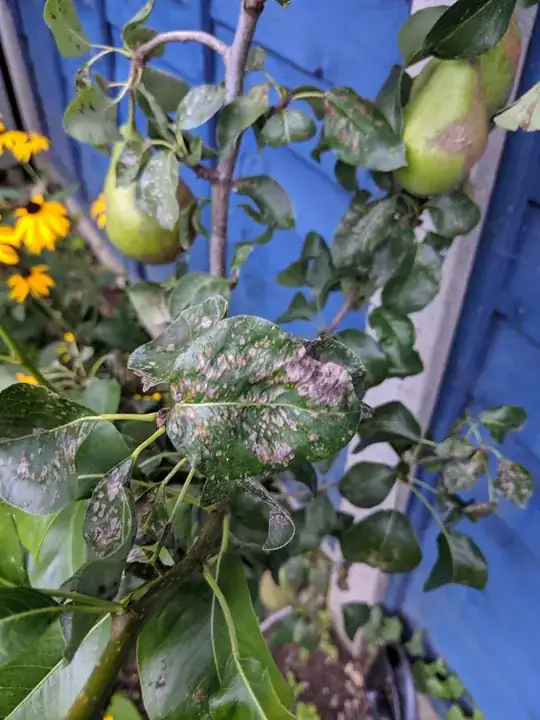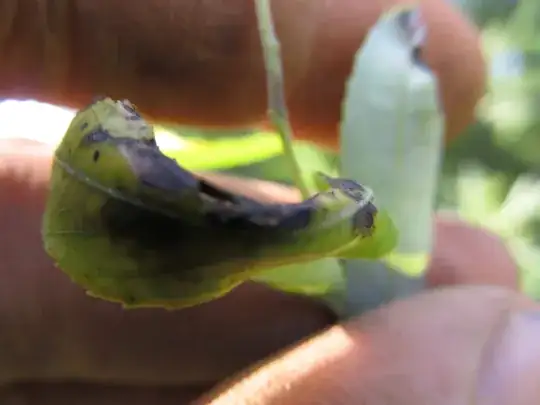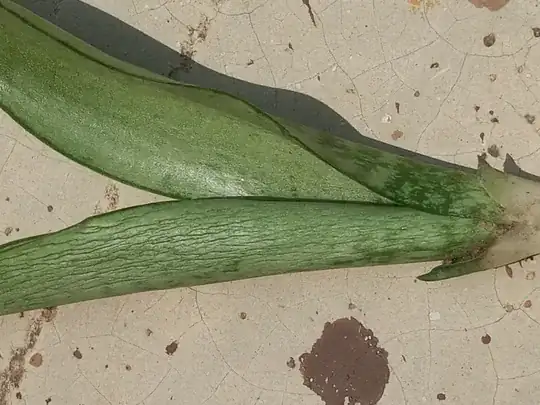Thank you for your question.
I have been conducting many experiments with regards to snake plants and looking at the specimen you show in your picture, I am somewhat puzzled as to what it was you bought a month ago since the single rosette in that picture has a rhizome structure decidedly stunted in length and normal roots of which I see only two. I might even be tempted to take it back to the shop and demand a refund, but this plant most certainly can be rescued !
I must conclude that you bought a plant that was woefully prepared for growing in any environment other than as a houseplant and this is not a problem for you but that of the grower and ultimately the retail store you purchased it from.
Not seeing the pup you refer to, I must assume that it was not growing from a node on the rhizome but was a stolon growing off the inadequate rhizome which invariably takes at least a year to develop its own new rhizome and root structure. Whilst it is doing this, the stolon structure connected to the main rosette rhizome is acting as an umbilicus supplying it with water and nutrients from the main plant. It is therefore no wonder that it died if it had been severed from the decidedly small parent rhizome.
You could reasonably expected to have bought a plant with a more adequate rhizome, wherein a good watering would have permitted the plant to have survived your trip away from your home had it been inside your home, but the full sun it had to sustain whilst you were away dehydrated the entire main rosette and rhizome and most probably compromised the new pup growing off the stolon.
About 8 weeks ago, I divided up a 3 rosetted snake plant which also had 3 stolons. Fortunately the stolons had rudumentary roots coming off the proto-rhizome and I made the decision to pot up one stolon pup and 2 divided rhizomes each with one rosette. The other 2 rhizomes and 1 pup I put into glasses of water as an experiment.
All plants are continuing to thrive, particularly the ones still in the glass of water (see photo, left glass)
So, whilst I cannot give you a 100% assurance the rosette and small rhizome will survive, my advice would be to rinse off any substrate and put it into a tall glass of water and keep it indoors, ideally away from full sun for now.
It is likely that algae might also grow in the water, so change the water once every 7-10 days or more often if the water goes cloudy or shows signs of fungal growth. It would also be wise to check the rhizome (when you do the water change) with your fingers to ensure there is no mushiness and smell it for any unpleasant smells.
Over 15 months ago, I have also experimented with growing one snake plant rosette in semi-hydroponics in a glass vase packed with leca keeping the water level at or just below the location of the rhizome. Provided you have washed away all the original substrate, I can say snake plants will continued to thrive as in my experiment (photo, right vase). I also have Sanseviera Cylindrica versions growing successfully in glass vases with leca and water too.
Sanseviera as a genus is native to the arid areas of sub-Saharan Africa and can, if supported by a substantial rhizome and root structure sustain very long periods without water even in full sun. It's thick waxy leaves have adapted to be opportunistic to the infrequent rains on the African savannah and can retain an amazing amount of water in their structures and also possess the ability to photosynthesise with very low amounts of water, a skill it shares with succulents. This is why the recommended watering schedule for snake plants kept as houseplants is total drenching with water every 1 month (2 months in winter).

Sanseviera is a survivor and as a result of the high water content in its leaves it has but one main predator - the African Elephant who will merrily chomp through a patch of snake plants as a source of water and nutrient.
The waxy leaves are impervious to transpiration and so it has enabled the plant to now be regarded as a highly invasive weed throughout Indonesia, Philippines and even Queensland, Australia since it can survive in high humidity and heavy rains as well as low humidity as in California and Nevada. All the incidences of the plant outside Africa are from being brought in by gardeners either as outdoor specimens or indoor houseplants.
So, get your plant washed off and put in a tall vase or glass of water and I feel sure it will re-hydrate fairly quickly. Come the autumn, it should be restored to a more secure state to be either put in a larger vase with leca and grown semi-hydroponically (with some fertiliser of course) or potted in a well-draining gritty cactus-type substrate in a well draining pot. Substrate grown sansevieria plants should only be watered - by full drenching (like the rains in Africa - cue, Toto) and then being allowed to dry out for a month.
Once restored back to health, you might then consider propagating from one or two leaves, but that is for another question.
Good luck .


